I was 22, fresh out of college, broke but determined to travel. Sri Lanka ticked the boxes: affordable, visa-friendly for Pakistanis, and just chaotic enough to feel like an adventure. We needed a place for a bachelorette trip, and between the politics, inflation, and mild chaos, Sri Lanka sounded like somewhere people weren’t going – which is exactly why we went.
This 10-day itinerary is a pared-down version of that trip. Temples, tea hills, wildlife, beaches—without the rush. It’s for travelers who want a bit of culture and chaos, but still care about sleep and not blowing their budget on beachfront smoothies.
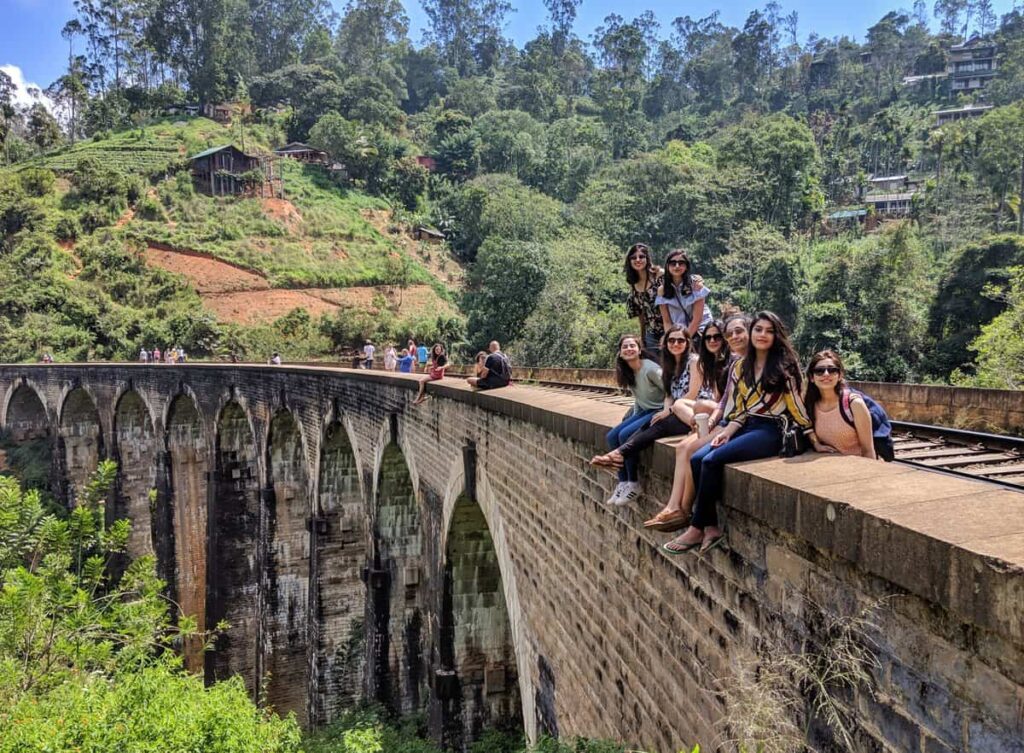
Practical Travel Tips for Sri Lanka
I visited Sri Lanka in 2019, back when flights were cheap, fuel was cheaper, and no one knew the name of their central bank governor. A lot has changed since then—political protests, economic collapse, a few curfews—but the country has reopened, and travelers are slowly trickling back in. It’s different now, yes. But still very worth it.
Here’s what to keep in mind:
How long should you spend in Sri Lanka?
I’ll always vote for longer, slower travel. But if you’ve only got 10 days, you can still see a surprising amount without burning out. It’s a compact country—distances are short, but don’t trust Google Maps too much. The roads and trains have their own timeline.
Visa for Pakistani Passport Holders
Sri Lanka is blessedly chill when it comes to visas. As a Pakistani passport holder, I got an e-visa in under 48 hours. The process was straightforward and entirely online—none of that embassy shuffle. It’s one of the few countries where visa stress doesn’t overshadow the fun.
If you’re wondering where else you can go without losing your mind at an embassy, I’ve got a full guide on visa-free countries for Pakistani passport holders.
When to Go
I went in February, which meant dry skies, fewer crowds, and beach weather that didn’t feel like you were melting. Generally, December to March is best for the south and west; May to September for the east coast. Shoulder seasons (April or October) offer lower prices and slightly chaotic weather.
What’s the currency—and should you carry cash?
Sri Lanka runs on the Sri Lankan Rupee (LKR). Post-crisis, prices have crept up—nothing outrageous, but noticeable if you’re on a budget. ATMs are everywhere in cities but expect withdrawal fees. Always carry cash for tuk-tuks, guesthouses, and remote areas where card machines are either mythical or “not working today, madam.”
Trip Budget
Back in 2019, I was spending about $30–40/day, including accommodation, food, and transport. These days, budget travelers might need $40–60/day. Alcohol, fuel, and park entry fees can add up fast, so budget a little extra for unexpected splurges (like that one very convincing tuk-tuk driver in Ella).
How to Get There
Colombo’s Bandaranaike International Airport (CMB) is the main entry point. Flights from Karachi or Lahore usually connect through Dubai, Doha, or Muscat. The earlier you book, the less you’ll cry at checkout.
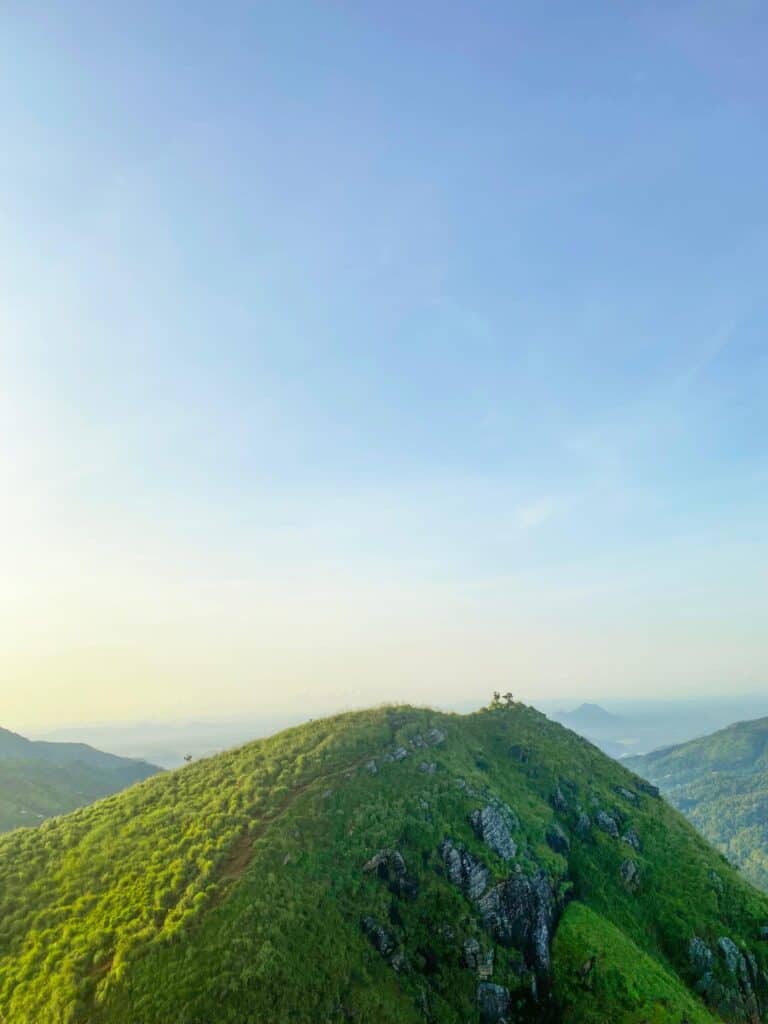
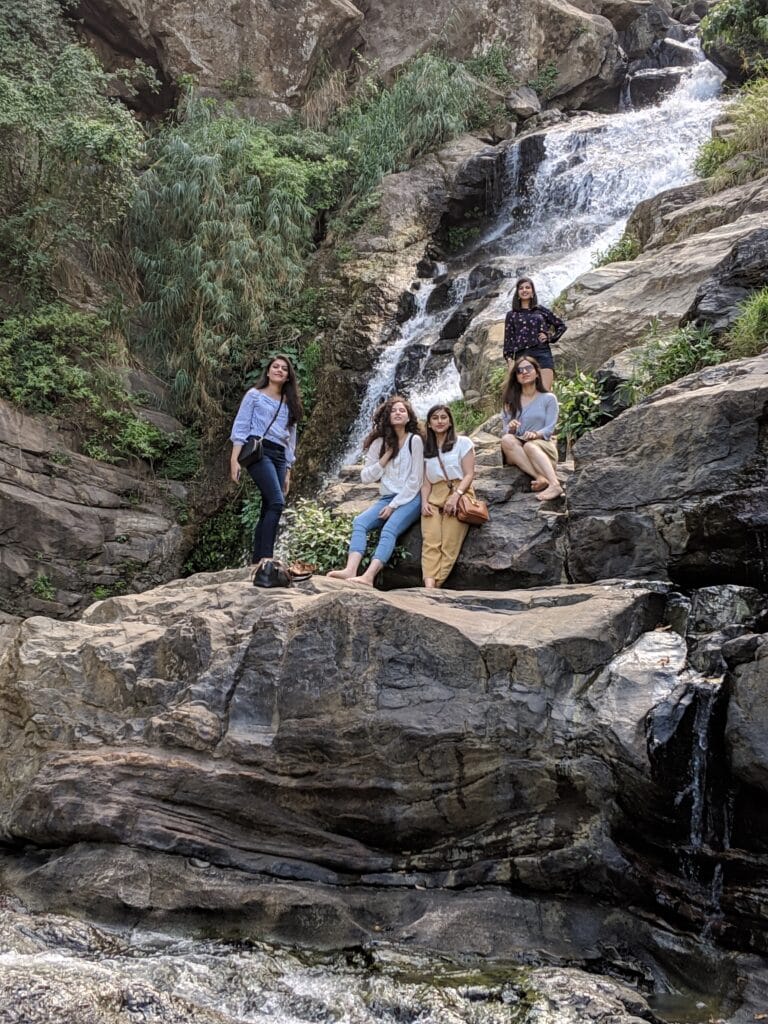
Getting Around Sri Lanka
Getting around Sri Lanka is mostly functional, occasionally scenic, and often slower than you’d expect.
Trains vs. Buses
Trains are the better option—slower than buses, but more bearable. The Kandy to Ella route is famous for a reason: open windows, tea hills, long stretches of calm. Buses are faster but loud, packed, and driven like there’s a prize for cornering on two wheels.
Tuk-Tuks
Tuk-tuks are everywhere. Always ask the price before getting in—it’s less about bargaining and more about avoiding surprises. Most drivers will quote a tourist rate, but unless it’s wildly inflated, it’s not worth arguing over a dollar. In cities, use PickMe to skip the usual song and dance.
Booking Train Tickets
For tourist-heavy routes like Kandy to Ella, book in advance. I didn’t, and ended up standing half the way. For local trains, you can usually show up and figure it out—just don’t expect precision timing or a guaranteed seat.
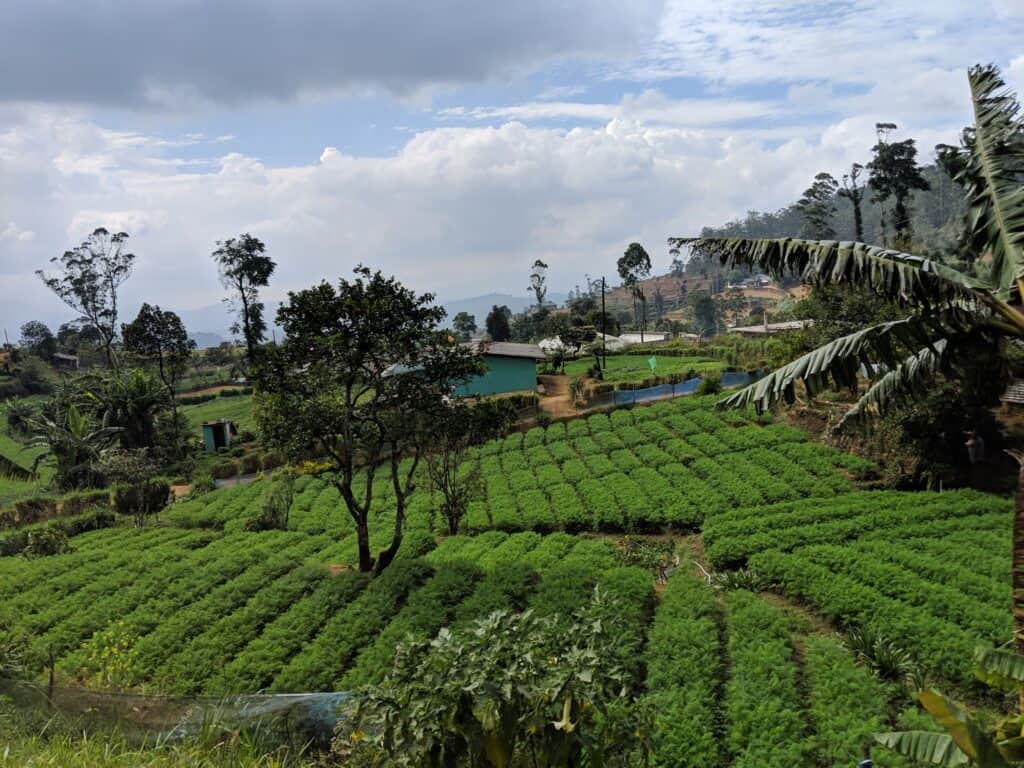
Day 1: Arriving in Colombo
Colombo is loud, messy, and not built to impress you—but it’s where most trips start. I didn’t expect much from the capital, but I ended up liking it more than I thought I would. Spend the day getting your bearings, trying street snacks, and slowly adjusting your pace to match the city’s humid, semi-chaotic rhythm.
How to Get from the Airport
Bandaranaike International Airport is about 45 minutes from the city center. You can grab a prepaid taxi at the counter or book a ride through PickMe, which is cheaper and avoids the usual airport price padding. There’s also an airport bus if you’re really budgeting, but I wouldn’t recommend it after a long flight.
Where to Stay in Colombo
- Budget: Try Mount Lavinia for a quieter, beach-adjacent vibe. It’s a bit outside the center but more peaceful.
- Mid-range: Colombo Fort and Bambalapitiya are well-connected and have decent guesthouses and boutique hotels.
- Upscale: Cinnamon Gardens is the fancy bit—wide roads, colonial architecture, and bougie cafés if that’s your thing.
What to Actually Do in Colombo
Skip the museums unless you’re a completist. Instead:
Colombo won’t be anyone’s favorite stop—but it’s a decent intro to the country’s rhythm, and not a bad place to land.

Day 2 & 3: Sigiriya & Dambulla
This is where the itinerary starts to feel different. You’re out of the city, the air’s clearer, and suddenly you’re climbing giant rocks and walking through ancient caves full of Buddha statues.
Sigiriya vs. Pidurangala: Which One to Climb?
Sigiriya is the postcard version—UNESCO-listed, symmetrical gardens, and a ruined palace on top of a rock. It’s also $30 USD to enter. I skipped it and went for Pidurangala, which sits right across from it. The climb is slightly rougher (a bit of scrambling near the top), but the views of Sigiriya are better than the views from it. Also: way fewer people, way less noise.
Dambulla Cave Temple
The Dambulla Cave Temple, a short drive from either rock, is worth the detour. It’s a complex of five caves filled with ancient murals and over 150 Buddha statues. Slightly surreal, very quiet, and easy to do in an hour or two. Wear something that covers your shoulders and knees—you’ll need to remove shoes at the entrance.
Minneriya National Park
If you’re in the mood for a safari this early, this is a good spot to do it. Minneriya National Park is quieter than Yala and less hyped than Udawalawe, but we saw herds of elephants moving through the open grasslands without another jeep in sight. Go in the late afternoon for golden hour light and fewer crowds.
Where to Stay
- Sigiriya makes more sense if you’re safari-bound or want to be close to the rock climbs.
- Dambulla is calmer and cheaper. I stayed there and appreciated the quiet after a long, hot day outside.
What to Eat
The tourist spots around Sigiriya are fine, but overpriced. I had better food at nameless roadside dhabas near Dambulla—just basic rice and curry, eaten off metal plates, served with the kind of nonchalance that means it’ll be good.
Minneriya National Park
If you want to see elephants early in the trip, Minneriya is the park to go to. It’s not off-the-radar by any means, but it does get fewer crowds than Yala. The landscape is open, which makes spotting wildlife easier, especially in the dry season when animals gather near the reservoir. We saw plenty of elephants without needing to chase them down in jeeps. It’s best to go in the afternoon—cooler light, better photos, and slightly fewer people.
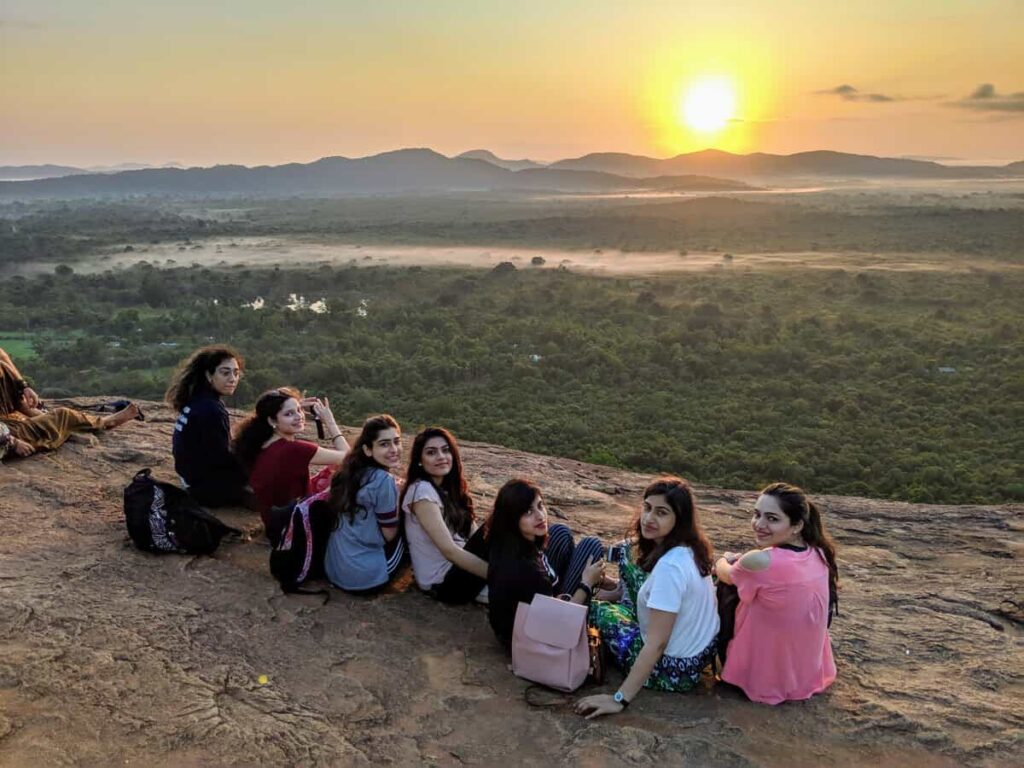
Day 4: Kandy
Kandy has a slower pace compared to Colombo, and I loved how the town feels wrapped in tradition. Plus, discovering the quieter spots in town, like hidden tea houses, was a real treat.
Is the Temple of the Tooth worth visiting?
Is the Temple of the Tooth worth visiting? Yes, if you’re keen on diving into Sri Lanka’s Buddhist heritage. The temple holds a sacred tooth relic of Buddha and is an important cultural site located between the royal palace and Kandy Lake While the crowds can be intense, the spiritual significance and intricate architecture make it a worthwhile stop.
Hidden gems in Kandy: Markets and tea houses
Kandy’s charm lies beyond its tourist attractions. I wandered through its bustling local markets, where you can find everything from fresh spices to handmade crafts. The real gem, though, was the tea houses tucked away in quiet corners. Sipping on freshly brewed tea while overlooking the rolling hills was one of my favorite experiences in Kandy.
Why you should skip Pinnawala Elephant Orphanage
I skipped Pinnawala Elephant Orphanage, and I’m glad I did. Though marketed as a sanctuary, many travelers have reported questionable practices, such as the use of chains and forced interactions. If you’re passionate about ethical wildlife experiences, there are better options in Sri Lanka that don’t contribute to animal exploitation.
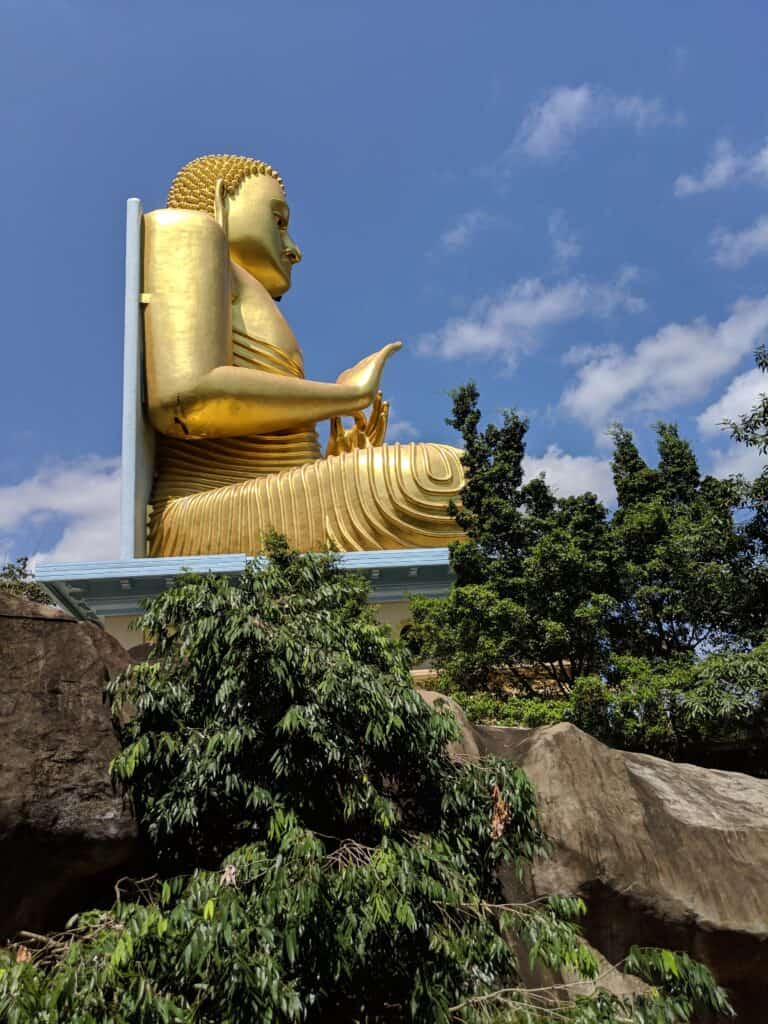
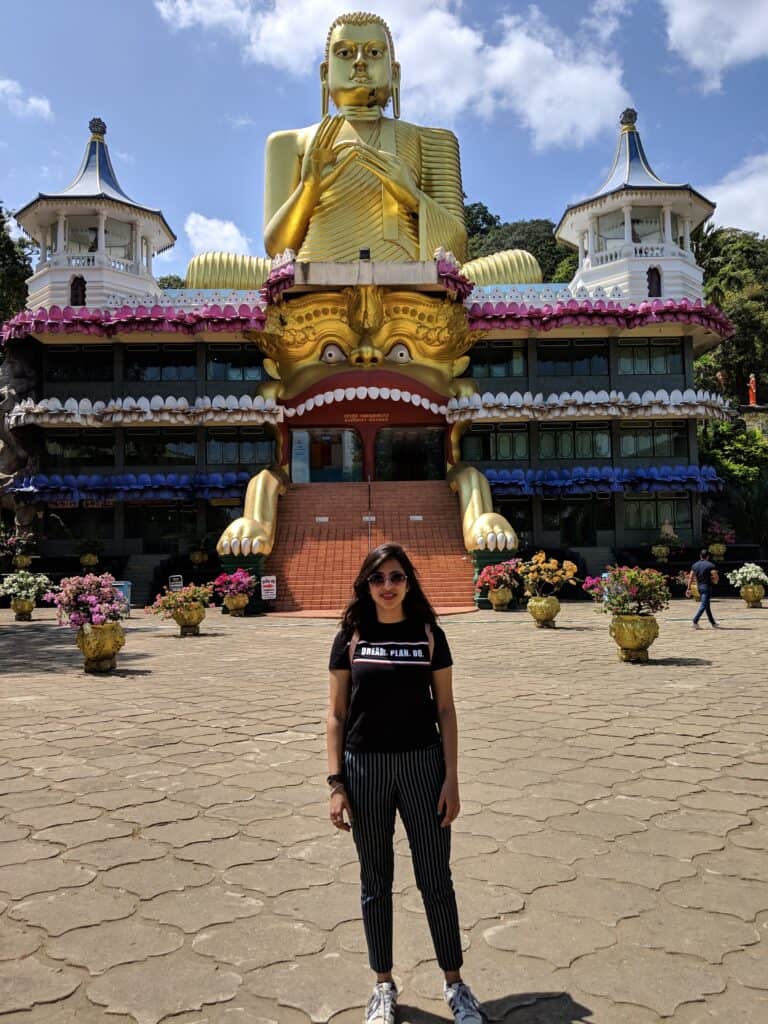
Day 5: Experiencing the Kandy to Ella Train Ride
This is the train ride. The one you’ve probably seen in reels with someone hanging dramatically out of a blue carriage, wind in their hair, tea fields rolling by. Yes, it’s slow. Yes, it’s crowded. And yes, it’s absolutely worth it.
How to Book
Trains fill up fast—especially the second and third class reserved seats. If you’re set on getting a window seat (and keeping it), book in advance through 12Go Asia or buy at the station as soon as you arrive in Kandy. The train takes 6–8 hours depending on delays, so settle in.
Which Side to Sit On
Right side of the train for the best views—especially the stretch past Nanu Oya. If you’re into photos, sit on the side that’s opposite the sun for softer lighting (usually the right side if you’re headed south in the morning).
What to Bring
- Snacks and water (the onboard options are hit or miss – though, I highly recommend the fish samosas)
- Layers—the hill country gets chilly
- Toilet paper (just in case)
- Patience
Worth a Stop: Nuwara Eliya
If you want to break the journey, get off at Nanu Oya and spend a day or two in Nuwara Eliya. It’s cooler, full of colonial-era architecture, and surrounded by tea estates. I didn’t stop, but I wish I had—it’s a good breather and less touristy than Ella.

Day 6 & 7: Ella
Ella was the first place I felt like staying put. The weather was cooler, the pace slower, and for once, we weren’t rushing to check anything off. It’s a small town, easy to walk, and surrounded by tea hills that make doing nothing feel like a valid itinerary.
Little Adam’s Peak
I didn’t do this one, but everyone else in our group did and loved it. Not to be confused with Adam’s Peak, which is a full overnight pilgrimage in the central highlands. Little Adam’s Peak is the quick, tourist-friendly version. It’s a short, easy hike—nothing that requires gear or a guide. Go early to avoid the heat, and you’ll get solid views over Ella Gap and the surrounding tea estates.
Nine Arch Bridge
You can walk there along the tracks from town—maybe 20 minutes. We went late in the afternoon and it was still busy, but manageable. If you time it right, you’ll catch the train crossing. If not, it’s still a nice spot to sit for a while.
Ravana Falls, Diyaluma, and Tea Estates
We visited Ravana Falls on the way into Ella. It’s right off the main road, so no hiking involved. Diyaluma Falls is bigger and better but takes effort—plan for half a day with a driver and a short hike up top. Around Ella, there are plenty of small tea plantations where you can walk through the fields or sit down for a cup. No tour, no pressure.

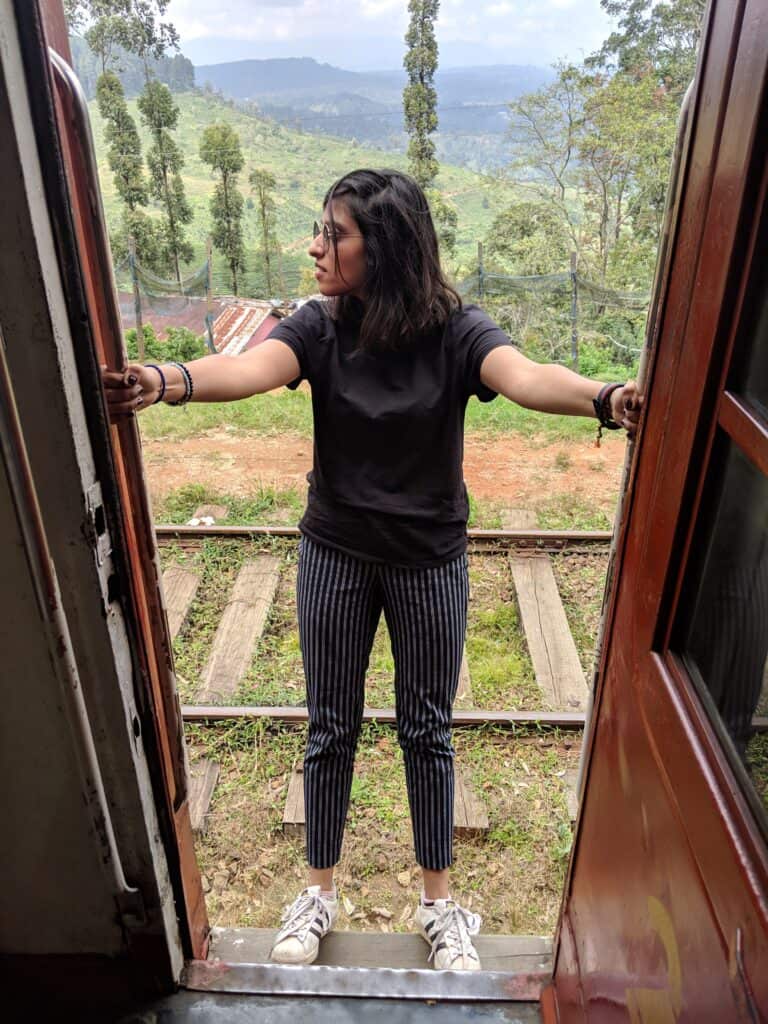
Day 8: Safari
Sri Lanka was my first safari, and it hooked me. There’s something surreal about seeing elephants just there—not in a zoo, not in a sanctuary, but out in the open, doing elephant things. You’ll have two main options: Yala or Udawalawe.
Yala vs. Udawalawe
We chose Udawalawe, mostly because it fit better into the route, and I was more excited about elephants than chasing leopards. Yala is the bigger name—more diverse landscape, better chance of spotting big cats, and also a lot more jeeps. Udawalawe is smaller, less crowded, and basically guarantees elephant sightings. If you’ve never done a safari before, it’s a solid introduction.
How to Book
You can book safaris through your guesthouse or online ahead of time. We did a half-day tour through Udawalwe Safari Tour and it was smooth—picked us up early, handled permits, didn’t try to upsell anything.
What It Costs
Expect to spend around $60–$70 per person for a half-day safari. That includes the jeep, driver, and park fees. Bring snacks, water, and something to sit on if the seat padding’s seen better days.
When to Go
Early morning is best—cooler temperatures, more active animals, and better light. If your driver suggests leaving at 4:30am, just say yes.
A Note on Safari Ethics
Try to avoid drivers who speed toward animals or crowd them with jeeps. It’s not a zoo, and the point isn’t just to “get the shot.” We were lucky—our driver kept a respectful distance and shut the engine off when we stopped. It made the whole thing feel calmer and, honestly, more impressive.

Day 9 & 10: South Coast
The last stretch is all beaches, sunsets, and wondering if you should’ve just come here first and stayed put. The southern coast is easy to navigate—towns are close together, and you can day trip between them if you don’t want to pack and repack.
Where to Base Yourself
We split our time between Hikkaduwa and Mirissa.
- Hikkaduwa had more going on—snorkeling, beach cafés, actual nightlife.
- Mirissa was slower, quieter, better sunsets.
Both worked. If I went again, I’d probably stay in one and visit the others by tuk-tuk or bus.
Beach Options
- Unawatuna: Classic beach town feel. Clear water, palm trees, and lots of beachfront places to eat.
- Bentota: Less crowded, wider beach. Good if you’re wrapping up your trip and don’t want to see anyone.
- More beach recs here: Best beaches in Sri Lanka
Food and Sunsets
Mirissa wins on sunsets—there’s a stretch of beach bars where you can sit with a drink and just let it all end slowly. For food, we stuck to beach grills in Hikkaduwa—lots of fresh fish, simple curries, cheap beer. Nothing fancy, nothing bad.
Whale Watching in Mirissa
We did it, and I left feeling conflicted. Seeing whales was incredible, but the sheer number of boats felt off. If you go, look for operators that follow distancing rules and don’t chase the animals. Sri Lanka’s whale watching indusrty has grown fast, and the regulation hasn’t caught up.
Galle Fort
Easy stop on your way back to Colombo. Galle is pretty, preserved, and full of overpriced gelato. Walk the walls, dip into the shops, grab a snack, then move on. It’s a good place to stretch your legs before the long ride back.
Final Thoughts
Sri Lanka gives you a lot without asking for much. It’s the kind of trip that stays in your head for a while—not because everything was perfect, but because it didn’t have to be. You get temples, tea hills, safaris, and beaches, all within a few hours of each other. And somewhere in that mix, you figure out your own rhythm.
This 10-day itinerary isn’t comprehensive—it’s just one version that balances movement with moments of stillness. If you have more time, take it. If you don’t, this is a solid place to start.
FAQ
Is Sri Lanka safe for solo female travelers?
Generally, yes. Use the same instincts you would anywhere: book well-reviewed accommodation, avoid isolated areas after dark, and dress modestly in rural towns. I felt safe the whole time.
Do Pakistanis need a visa for Sri Lanka?
Yes, but it’s easy. I covered the process in detail here. As of my last trip, Pakistan passport holders needed an e-visa, which you can apply for online..
When did you visit?
I went in 2019, before the political and economic chaos of 2022. Things have changed since, but the core of the trip still holds. Check current conditions before you go—especially around elections or fuel shortages.
Is Sri Lanka still affordable?
It’s more expensive than it used to be, especially after inflation hit. Budget travelers can still manage, but prices for transport, entry fees, and accommodation have climbed. Carry cash and expect the occasional surprise cost.
What’s the food like for vegetarians/vegans?
Fantastic. Rice and curry is often veg by default, and dishes like dal, coconut sambol, and hoppers are everywhere. Just double-check about ghee or fish-based stock if you’re strict.
